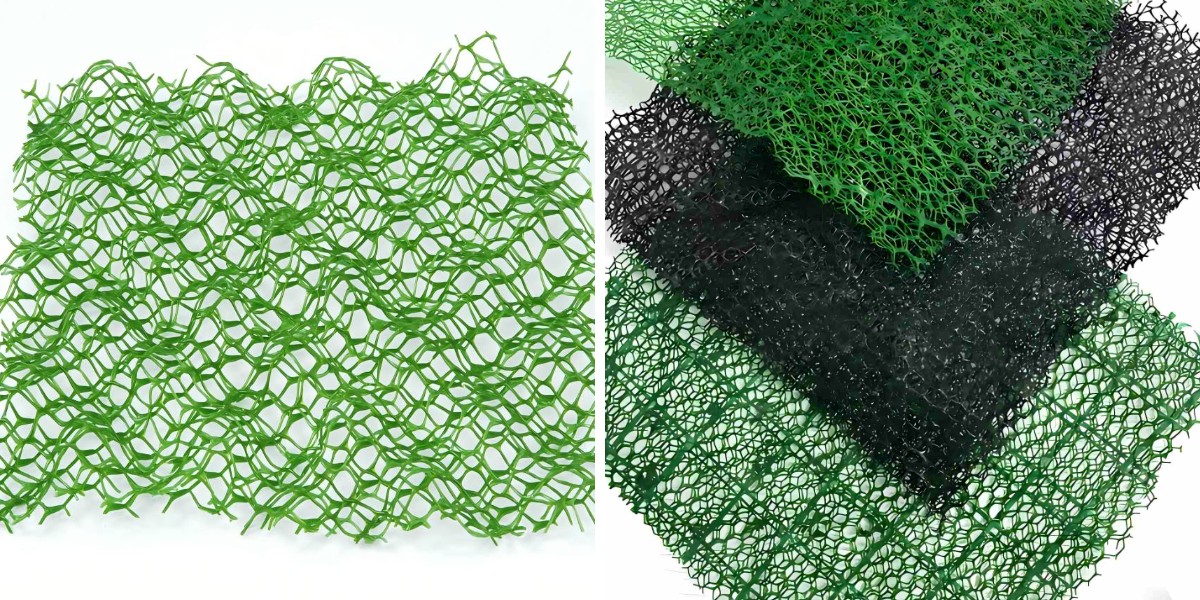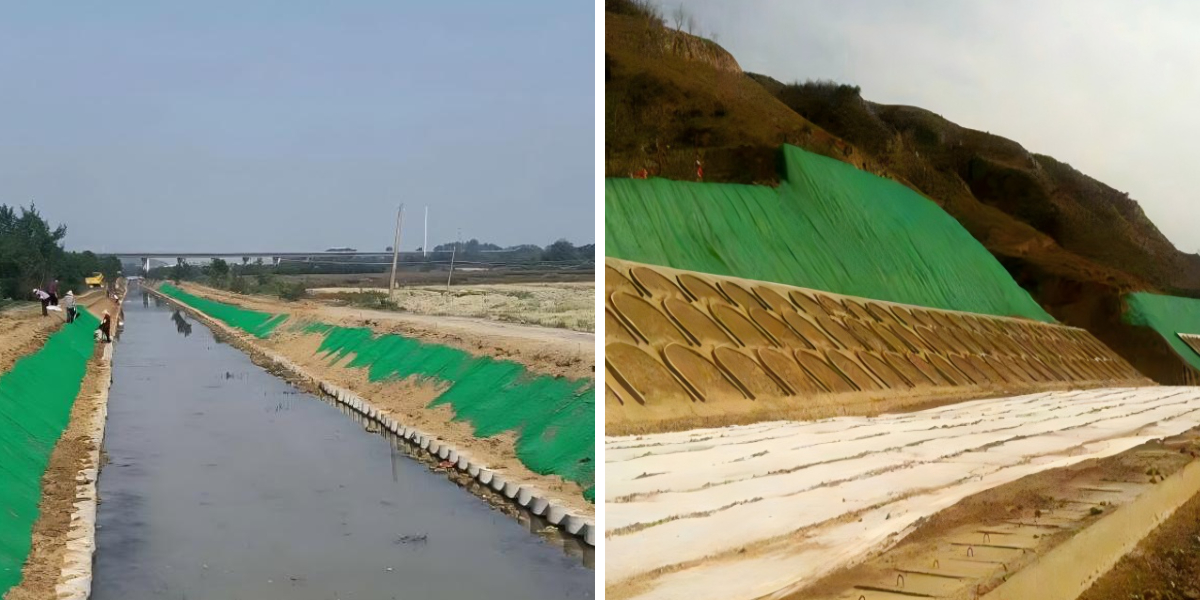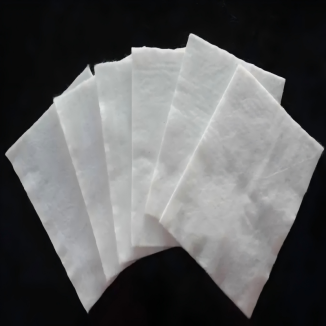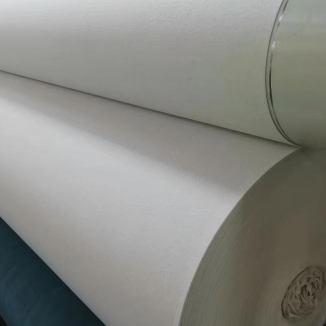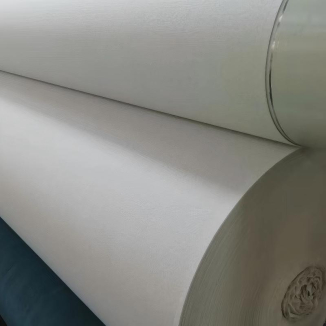Geomat Solutions for Riverbank Erosion Control
Riverbank erosion is a silent hazard to ecosystems, infrastructure, and human settlements worldwide. Left unaddressed, it can lead to land loss, degraded water quality, and damaged roads or homes. Traditional erosion manipulate methods—such as rock riprap or concrete lining—often fall speedy in sustainability, cost-effectiveness, or ecological compatibility. Today, geomat utilized sciences have emerged as a game-changing solution, supplying a balance of durability, environmental friendliness, and ease of installation. This article explores how geomats, collectively with specialised preferences like 3D geonet and erosion manipulate matting, are revolutionizing riverbank protection, and why they have to be a pinnacle desire for engineers, environmentalists, and regional leaders.
1. The Growing Crisis of Riverbank Erosion: Why Action Is Critical
Before diving into geomat solutions, it’s fundamental to apprehend the scope of the riverbank erosion problem—and why out of date methods are no longer sufficient.
Riverbank erosion takes vicinity when water flow, wave action, or human exercising (e.g., deforestation, overdevelopment) strips away soil from the banks of rivers, streams, or lakes. Factors like nearby climate change—intensifying storms, heavier rainfall, and rising water levels—are accelerating this process. The penalties are far-reaching:
Ecological damage: Eroded soil clouds waterways, blockading sunlight hours for aquatic plant lifestyles and disrupting habitats for fish, birds, and invertebrates. It moreover accommodates pollution (e.g., fertilizers, pesticides) into water sources, worsening water quality.
Infrastructure risk: Eroded banks can undermine bridges, culverts, roads, and even buildings, primary to luxurious repairs or catastrophic failures.
Economic loss: Communities rely on consistent riverbanks for agriculture, tourism, and water supply. Erosion reduces arable land, harms amusement areas, and will amplify the hazard of flooding.
Traditional picks like rock riprap are heavy, excessive priced to transport, and can disrupt natural habitats by using creating a “hard” barrier that blocks plant extend and flowers and fauna movement. Concrete linings are even higher ecologically destructive, turning natural banks into sterile surfaces. This is the region geomat preferences shine: they mimic natural processes, decorate soil, and assist ecosystem recovery—all while being competitively priced and handy to deploy.
2. Geomat: The Core of Modern Riverbank Erosion Control
At the coronary coronary heart of brilliant riverbank protection lies the geomat—a synthetic or natural fiber matrix designed to stabilize soil, reduce water velocity, and promote vegetation growth. Geomats are engineered to address the root causes of erosion, as an choice than honestly defending symptoms, making them a sustainable long-term solution.
What Is a Geomat?
A geomat is a flexible, porous sheet made from elements like polypropylene, coir (coconut fiber), jute, or a combination of synthetic and natural fibers. Its structure—typically a mesh, mat, or woven fabric—traps soil particles, stopping them from being washed away through way of water. At the same time, its porosity approves water to drain, decreasing hydrostatic stress on the economic group (a fundamental driver of erosion). Unlike rigid materials, geomats conform to the structure of the riverbank, making certain full contact with the soil and minimizing gaps the area erosion ought to start.
How Geomats Work for Riverbanks
When installed on a riverbank, geomats function three key functions:
Soil stabilization: The mat’s fibers interlock with soil particles, growing a cohesive layer that resists detachment thru water flow. This is specifically crucial for sandy or silty soils, which are inclined to erosion.
Vegetation support: Geomats furnish a consistent base for grass, shrubs, or native plant life to take root. As vegetation grow, their roots in a similar way help the soil, creating a “living barrier” that enhances the mat’s effectiveness over time. Many geomats are biodegradable (e.g., coir or jute) and smash down as vegetation matures, leaving no unfavorable residue.
Flow reduction: By disrupting the tempo of water alongside the bank, geomats reduce the strain of waves and currents. This now no longer totally protects the soil on the other hand moreover prevents in addition scouring (the removal of soil from the base of the bank).
Why Geomats Outperform Traditional Methods
Compared to rock or concrete, geomat selections furnish clear advantages:
Cost savings: Geomats are lighter and much less tricky to transport, reducing logistics costs. They moreover require plenty much less labor to install, as they can be rolled out and secured quickly.
Ecological compatibility: Biodegradable geomats resource native plant growth, restoring habitats for aquatic and terrestrial species. They moreover allow water to filter through, protecting natural hydrology.
Durability: Synthetic geomats (e.g., polypropylene) are resistant to UV rays, chemicals, and natural degradation, making positive long-term protection. Even biodegradable options closing prolonged ample for vegetation to set up a eternal root system.
3. 3D Geonet: Enhanced Strength for High-Stress Riverbanks
While considerable geomats work precise for practical erosion conditions, high-stress environments—such as fast-flowing rivers, steep banks, or areas inclined to wave action—require a more sturdy solution. This is the region 3D geonet comes in. A 3D geonet is an most advantageous geomat with a three-dimensional, honeycomb-like form that provides pinnacle of the line soil retention, load distribution, and resistance to hydraulic forces.
What Makes 3D Geonet Unique?
Unlike flat geomats, 3D geonets have raised, interconnected cells that create a “pocket” system for soil. Each cell traps soil particles, stopping them from being washed away, while the regular structure distributes the stress of water evenly at some stage in the bank. The 3D graph also:
Increases ground roughness: The raised cells slow down water flow, lowering scouring and erosion.
Boosts root penetration: Plant roots can improve via the cells, anchoring deeper into the soil and developing a stronger, greater constant bank.
Enhances drainage: The open shape lets in greater water to drain from the soil, stopping waterlogging and decreasing stress on the bank.
Applications of 3D Geonet in Riverbank Control
3D geonets are ideal for challenging riverbank scenarios, including:
Fast-flowing rivers: In rivers with immoderate tempo (e.g., mountain streams or town waterways), 3D geonets stand up to the strain of water greater than flat geomats. Their rigid structure prevents the mat from transferring or tearing, even beneath extreme pressure.
Steep banks: Banks with slopes greater than 30 levels are at immoderate risk of soil slippage. 3D geonets keep soil in area and furnish a constant base for vegetation, decreasing the hazard of landslides.
Wave-prone areas: Lakes, reservoirs, or coastal rivers uncovered to wave action acquire from 3D geonets. The 3D form dissipates wave energy, defending the monetary organization from erosion brought about by using repeated wave impacts.
Installation Tips for 3D Geonet
To maximize the effectiveness of 3D geonet, suitable set up is key:
Prepare the bank: Clear the internet site of debris, weeds, and free soil. Smooth the economic organization to make positive the geonet lies flat, with no gaps or wrinkles.
Secure the geonet: Unroll the 3D geonet alongside the bank, overlapping adjoining sheets via 6–12 inches to end gaps. Secure the mat with anchors (e.g., stakes, pins, or geotextile staples) at 1–2 foot intervals, making positive it is taut alternatively now now not stretched.
Add soil and vegetation: Fill the 3D geonet’s cells with topsoil or a soil-seed mixture. Plant native grasses, shrubs, or groundcovers to inspire root extend and long-term stability.
4. Erosion Control Matting: Versatile Protection for Every Riverbank
While 3D geonet excels in high-stress environments, erosion manipulate matting is a versatile, low in value choice for a big differ of riverbank conditions. Erosion manipulate matting—also recounted as erosion manipulate blankets (ECBs)—is a lightweight, flexible geomat designed to protect bare soil, velocity up vegetation growth, and stop erosion all via the quintessential organization part of plants.
What Is Erosion Control Matting?
Erosion manipulate matting is many times made from natural fibers (coir, jute, straw) or synthetic fibers (polypropylene, polyester). It comes in rolls of a range of thicknesses and densities, making it adaptable to high-quality erosion tiers and nearby climate conditions. Natural fiber matting is biodegradable, even as synthetic matting is non-biodegradable and designed for long-term use.
The most essential reason of erosion control matting is to “buy time” for vegetation to grow. When hooked up on a riverbank, it:
Protects bare soil: Prevents soil particles from being washed away via the use of rain, runoff, or water go with the drift before than vegetation can set up roots.
Retains moisture: Reduces evaporation from the soil, protecting seeds and youthful plant existence hydrated.
Moderates temperature: Shields soil from extreme warmness or cold, developing pinnacle of the line stipulations for seed germination.
Choosing the Right Erosion Control Matting
The sort of erosion manipulate matting you choose out depends upon on your riverbank’s conditions and goals:
Natural fiber matting (coir, jute): Best for low to life like erosion areas and eco-sensitive projects. Coir matting is lengthy lasting (lasts 2–5 years) and resistant to rot, while jute matting biodegrades faster (1–2 years) and is best for short protection. Both information native plant expand and combination into the natural environment.
Synthetic matting (polypropylene): Suitable for immoderate erosion areas or long-term protection. Synthetic matting is UV-resistant, waterproof, and can ultimate 10+ years. It is regularly used in metropolis waterways, constructing sites, or areas the region vegetation enlarge is slow.
Synergy with Geomats and 3D Geonets
Erosion manipulate matting is no longer a choice for sizable geomats or 3D geonets—it is often used in combination with them to enhance results. For example:
A 3D geonet can be hooked up first to grant structural support, accompanied via way of erosion control matting to protect the topsoil and promote vegetation.
In areas with average erosion, a layer of coir erosion manipulate matting may additionally moreover be ample on its own, on the other hand inclusive of a lightweight geomat under can make higher stability.
5. Key Considerations for Implementing Geomat Solutions
To make sure your geomat reply offers you long-lasting riverbank protection, retain these factors in mind:
Site Assessment
Before determining on a geomat, 3D geonet, or erosion control matting, conduct a thorough internet site on-line assessment:
Erosion severity: Measure water velocity, wave height, and soil variety to figure out the stage of protection needed. Fast-flowing rivers can additionally require 3D geonets, while slow-moving streams might also moreover completely prefer erosion manipulate matting.
Ecological goals: If restoring native habitats is a priority, figure out for biodegradable geomats (coir, jute) over synthetic ones.
Climate conditions: Choose UV-resistant geomats for sunny areas and water resistant alternatives for areas with heavy rainfall.
Installation Best Practices
Poor set up can limit the effectiveness of geomat solutions:
Prepare the soil: Loosen compacted soil to allow root penetration and make certain the geomat adheres tightly to the bank.
Secure properly: Use ample anchors to stop the geomat from shifting. For steep banks, add greater stakes at the pinnacle and bottom of the mat.
Monitor and maintain: Check the geomat frequently for damage (e.g., tears, shifting) and repair as needed. Once vegetation is established, trim overgrown plant lifestyles to prevent them from weighing down the mat.
Compliance with Regulations
Many areas have environmental regulations governing riverbank modification. Ensure your geomat reply meets nearby necessities for water quality, herbal world protection, and land use. Work with a licensed engineer or environmental advertising and marketing advisor to navigate lets in and approvals.
6. Real-World Impact: Geomat Solutions in Action
Across the globe, geomat utilized sciences are turning in tangible consequences for riverbank erosion control:
In rural communities, coir geomats and erosion control matting have restored degraded riverbanks, developing agricultural land and decreasing flooding risk.
In metropolis areas, 3D geonets have stabilized concrete-lined waterways, allowing vegetation to increase and improving water quality.
In coastal regions, synthetic geomats have covered river mouths from saltwater intrusion, keeping freshwater habitats for fish and birds.
These success tales highlight that geomat choices are no longer without a doubt effective—they are moreover on hand and scalable, making them fabulous for initiatives of all sizes, from small nearby initiatives to large-scale infrastructure projects.
Conclusion: Invest in Geomat Solutions for Sustainable Riverbank Protection
Riverbank erosion is a complex problem, then again geomat technologies—including 3D geonet and erosion manipulate matting—offer a simple, sustainable solution. By stabilizing soil, assisting vegetation, and working in harmony with nature, geomats outperform fashionable methods in cost, ecology, and durability.
Whether you’re an engineer designing a river restoration project, a local chief defending close by homes, or an environmentalist safeguarding ecosystems, geomat preferences can help you obtain your goals. By figuring out on the acceptable geomat for your site, following super practices for installation, and prioritizing ecological compatibility, you can create a riverbank that is strong, resilient, and thriving for generations to come.
Don’t wait until erosion motives irreversible damage—invest in geomat alternatives these days and shield the waterways that preserve us.
Contact Us
Company Name: Shandong Chuangwei New Materials Co., LTD
Contact Person :Jaden Sylvan
Contact Number :+86 19305485668
WhatsApp:+86 19305485668
Enterprise Email: cggeosynthetics@gmail.com
Enterprise Address: Entrepreneurship Park, Dayue District, Tai 'an City,
Shandong Province


